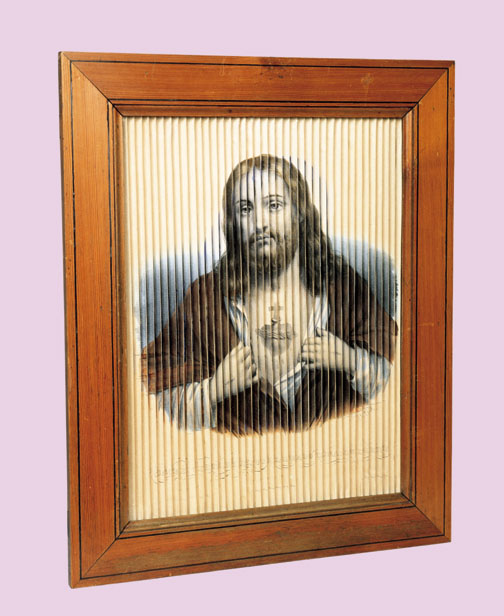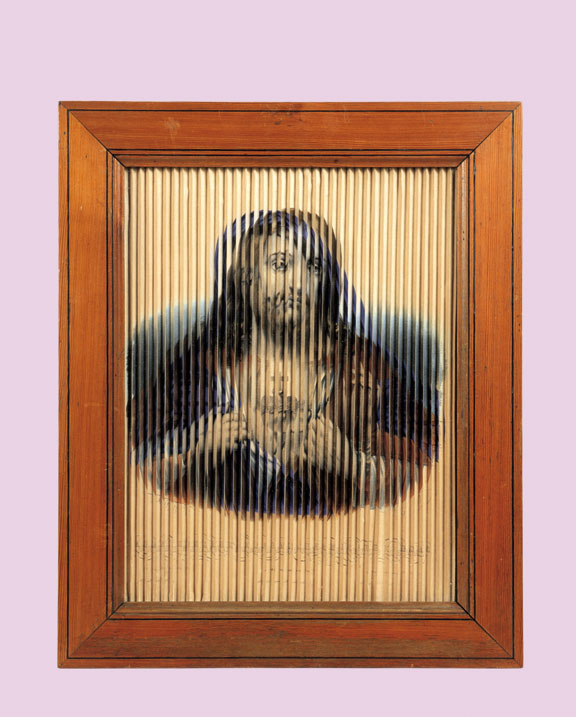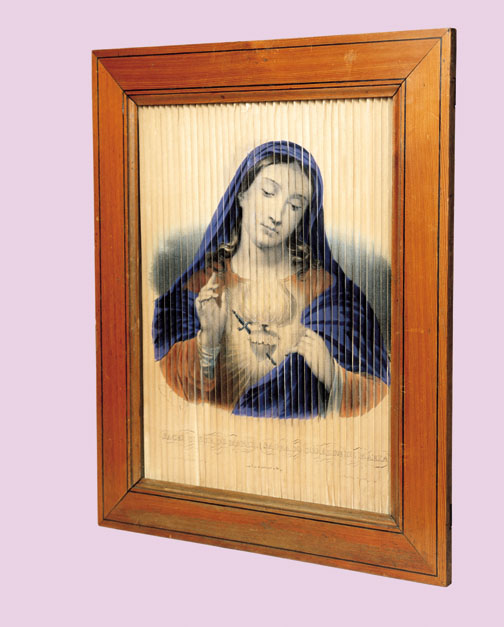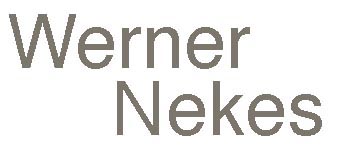Glossary T
A - B - C - D - E - F - G - H - I - J - K - L - M - N - O - P - Q - R - S - T - U - V - W - X - Y - Z
Two-way and Three-way Pictures
Thaumatrope
[Greek: thauma = miracle; tropos = turn]
Also known in German as Wunderdreher – ‘turning wonder' or ‘wonder disc’. A toy that relies on the principle of the afterimage, or persistence of vision.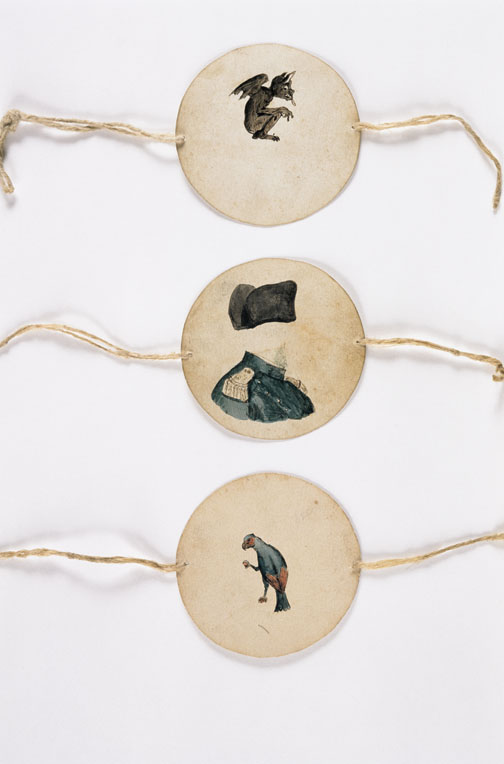
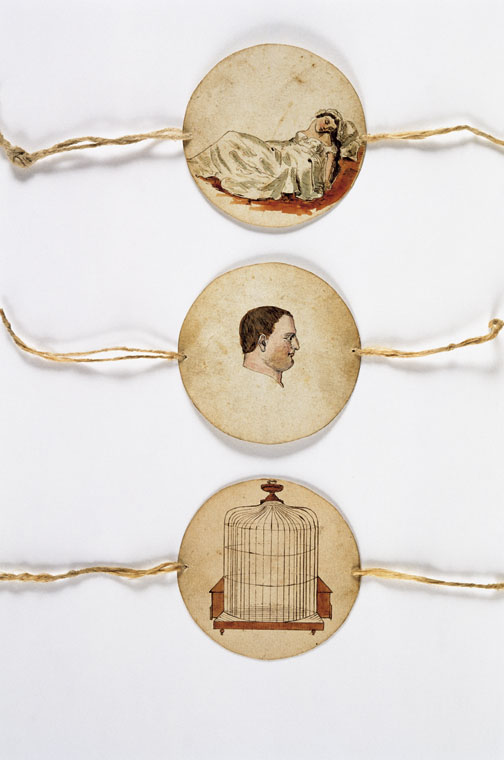
The ‘turning wonder’ is a toy developed in London in 1825 by W.H. Fitton (1780–1861) and John Aryton Paris (1785–1856), who were themselves inspired by Charles Babbage (1792–1871). A different picture is applied to either side of the ‘wonder disc’, to which two cords are attached.
When the disc is rotated at speed – the best method is to take the cords between one’s thumbs and index fingers – the two images are superimposed on each other, the motifs having been specifically chosen to complement each other and merge optically. For instance, if there is a bird on one side and an empty cage on the other, the viewer has the impression that the bird is trapped in the cage.
Transparent Pictures
Pictures painted on translucent supports and illuminated from behind.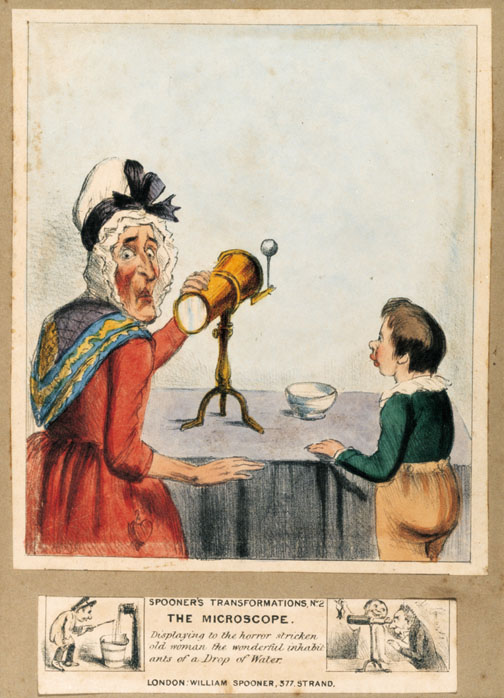
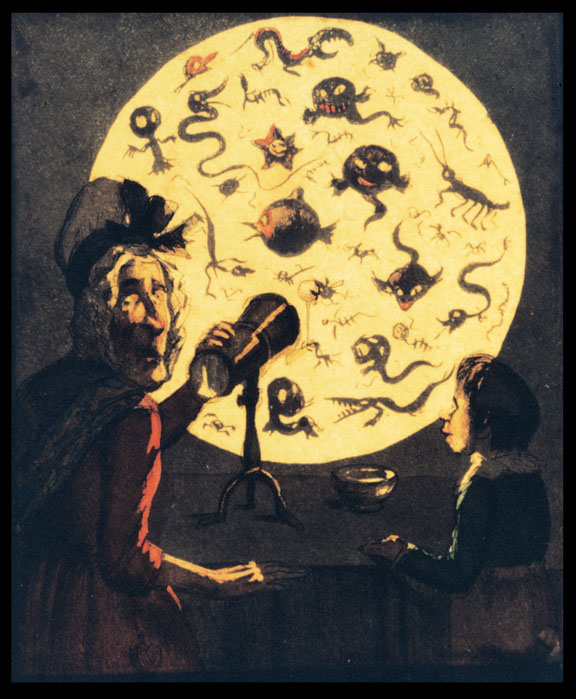
A derivative of the peep show, which established itself around 1700, the transparent picture became a pictorial genre in its own right around 1780. After 1820 their popularity increased and they soon appeared in diverse forms and with a variety of names, including moonshine slides, optical perspective paintings, diaphanorama, diorama, polyorama panoptique and megalethoscope. Despite formal differences they functioned in largely the same manner. These translucent paintings, illuminated from behind, were presented to great effect in darkened spaces. The effect of the unpainted, real light not only perfected the illusion of a landscape or architectural scene or a historical event, but also led to the perception of temporal and spatial changes in the static image. Picture supports could be glass, oiled paper, parchment, shaven leather, fine canvas or silk; these were printed and coloured, or worked with watercolours, thinned oils and the like. There were two main kinds of transparent picture, either one-sided or two-sided, which created a single or double diaphanous effect.
Two-way and Three-way Pictures
A form of vertical montage.
Two-way pictures date back to the seventeenth century.
Initially they were made from spars with a triangular cross-section; later, accordion-pleated card was used. Both methods produced a background of vertical angled planes facing in opposite directions. Alternating picture ‘strips’ with different scenes or images were painted or glued onto the spars. Viewed from the front they make no sense. The two images only resolve when they are viewed from one side or the other. Whether one looks from the right or the left, only one of the two images will be visible as a complete picture. This technique enjoyed its widest popularity in the nineteenth century. The preferred motifs were predominantly religious, with combinations such as Crucifixion/Resurrection or Jesus Christ/The Holy Virgin. The same tradition also includes three-way pictures known as trisceneoramas. The three pictures are again painted as strips: a recessed ‘central picture’ with the other two pictures on the strips forward and to either side of the back strips. Seen from the front, the main motif is visible; seen from the sides the other two paintings are revealed, their themes generally connected with that of the main motif.
